The Metaphysics of the I Ching: The Alignment of Heaven, Man and Earth
While the translational difficulties from Traditional Chinese into English are fairly well documented, even with the introduction of the Pinyin Romanization system of Chinese words in the middle of the twentieth century which is now predominantly used, it’s with noting that with respect to a numerological and arithmological interpretation of the Yìjīng much of these translational difficulty is bypassed given the level of abstraction that is used for comparison.[1] That is to say while the words and meanings of the commentary are definitely open to interpretation and multiple translations, transliteration and meanings, given the level of abstraction of the symbols themselves and their construction or architecture, we have an opportunity to be able to understand the symbols underlying the text, at least form a metaphysical point of view, independent of any translational difficulty to at least some extent.
While we look to and reference several translations of the Ten Wings as the source material for this analytical work in order to double (and sometimes triple) check the underlying meaning and interpretation of various passages which we use as evidence for the views and conclusions drawn herein, it is through an attempt at analyzing the underlying metaphysics of the text which gives us an opportunity to take us beyond a simple linguistic interpretation of the text itself to come to a better understanding of the ancient Chinese worldview which it represents, which in turn underlies all of Chinese philosophy more or less.
It is for this reason that this type of interpretative view is perhaps the only place to look to compare the two seemingly distinctive philosophical traditions, namely the Far Eastern/Ancient Chinese tradition as reflected in the Yìjīng and the and Classical Greek or Hellenic philosophical tradition as reflected in perhaps its earliest form as represented by Pythagorean philosophy. For while these two philosophical traditions are commonly understood as having developed completely independently of each other, the two traditions share remarkable similarities when it comes to metaphysics, and more specifically with respect to numerological and arithmological structure.
When we look to the Far East however, particularly to China and the systems of thought that originated in the Luohe River and Yellow River (Huáng Hé) valleys in the Upper Paleolithic and Bronze Age – 6th through 1st millennium BCE – we see strong evidence for a similar fascination and underlying belief in the cosmological world order being based not just on the interrelationship and interaction of basic forces of nature, but also upon basic numerical structure and form, and somewhat less so geometry, as put forth by their intellectual counterparts to the West. The Chinese did however create an altogether unique and distinct philosophical system however, what we call here metaphysics to borrow Aristotle’s terminology, to represent the world order that shares some of the basic characteristics of early Hellenic philosophy. Along with some basic similarities however, it also carried with it significant unique characteristics and underlying assumptions which have significant implications for their worldview as a whole which distinguish it from the Western intellectual tradition that persist even to this day.
It is not too far-fetched to say that the tradition surrounding the Yìjīng, or Classic of Changes, (怡靜), contains within it the seed of virtually all Chinese philosophical thought. It is the earliest philosophical work that we have from Chinese antiquity undoubtedly, if we may even call it a philosophical work, for it most certainly was not perceived as such by its authors in its earliest form. It is first and foremost, and continues to be even today, a “divination” text, one of the oldest in existence in fact, and to this extent it was designed as a way to get a glimpse of Fate as it were, a manual or guidebook devised to determine the current state of affairs and how best to manipulate them to one’s one advantage. The system however, again the underlying metaphysics, rests within a very specific and distinctively Chinese theo-philosophy which is perhaps best characterized by the belief that any given situation or experience can only be understood, or is best understood, through the triadic harmonic lens of the disparate and yet fundamentally interrelated worlds of Heaven, Earth and Man.
The Yìjīng accomplishes this by establishing a set of 64 signs or symbols, i.e. hexagrams, that account for all past, present and future events and situations, as well as a means for “divining”, or selecting, the current state of affairs and their context within the system of signs (guà)which provide a map as it were of the entire set of possible circumstances which can exist. This set of symbols in their earliest form are referred to as the Zhōu Yì, a text which dates at least as far back as Bronze Age China (mid to late 2nd millennium BCE, from the Zhou Dynasty period from which it gets its name), which then evolves into its present day form as the Yìjīng which then include and integrate the classically Confucian commentaries known as the Ten Wings, or Yizhuan (易傳) into the text.[2]
 Figure 13: Leibniz Yìjīng diagram, 17th century[3]
Figure 13: Leibniz Yìjīng diagram, 17th century[3]
While again the Yìjīng is not a philosophical work per se, it does have an implied or inferred metaphysics, and even cosmogony, that can be gleaned from the text even though it is not the primary focus of the text itself. It must be kept in mind however that a) the text clearly comes from deep antiquity and much of our understanding of its origins and creation is buried in myth and reflects a long standing oral tradition, and b) the only “direct” and earliest material that survives that describes its underlying philosophy and origins, its underlying metaphysics, was compiled in the latter part of the first millennium BCE, some thousand years or so at least after the primary portion of the text, the symbols and he divination process, was “invented”.
As described in the Ten Wings, the Yìjīng was designed to be consulted as a divination tool through a complex ritual involving yarrow stalks[4], or long reeds, through which the individual consulting the Book of Changes could better understand a specific question or problem which was “posed” to the text. The practice itself, which was ceremonial and ritualistic in nature, was intended to be overseen and guided by a trained priest or scholar who not only ensured that the proper rights and rituals were performed as part of the divination process, but also who was trained to “interpret” the symbol, or signs, that were “divined” as part of the “consultation” of the text. The sign or symbol that was ultimately constructed through the yarrow stalk divination process not only illustrated and illuminated the true nature of the given situation, or question, but also the context within which the situation was to be viewed within the overall universal set of circumstances which was believed to be fully “explained” by the set of 64 hexagrams.
Via the divination process, again historically performed with yarrow stalks but today sometimes performed in a slightly less complicated process using coins, a set of six broken (Yīn) and solid (Yáng) lines – yáo (or 爻) – are created which come together to denote one of the set of 64 symbols in the Yìjīng, each of which has its own specific interpretation and understanding within the text as a whole and representative again of the specific worldview and underlying theo-philosophy of the ancient Chinese which the text reflects. At the end of the process of divination, a sense of direction or movement (or lack thereof) is also established which is an important element in understanding the specific situation and whatever “advice” is given as a part of the interpretative process. So the notion of change, or movement – again yi – within the overall cosmic world order is an integral element of the interpretation of any given “consultation”, its universal context within the overall creative and destructive process of change within the realms of Heaven, Earth and Man as it were.
Each guà is meant to be read from the bottom to the top, where the bottom two lines reflect the state of Earth, the middle tow those of Man and the top two those of Heaven. Again each line of an individual guà or hexagram is made up of either a broken (Yīn) or solid (Yáng) line, each of which represents one of the two primordial universal forces to the ancient Chinese – Yīn and Yáng, dark and light, female and male, passive and active, negative and positive respectively. The selected hexagram which is “divined” is interpreted to represent not only an explanation of the state of affairs as reflected by the individual and the question posed – where each line reflects the current state of affairs related to one of Heaven, Earth or Man – but also an element of process or change (yi) to which the state of affairs is understood to be moving towards, as well as moving away from so to speak.
The divination process then, the final reading one might call it, includes not just the interpretation of the given symbol which “manifests” as a result of the yarrow stalk divination process, but also the notion of underlying change within the system of hexagrams itself which represented the entire cosmological worldview of the ancient Chinese. So the “situation” is understood to not just reflect a “snapshot” view at a given point in time, i.e. the time of the divination ritual, but also requires an understanding of the sense of “direction”, or “movement”, the propensity of the given situation to move towards. So the process of yarrow stalk divination combines the fixed underlying cosmological world order of the ancient Chinese[5], which is reflected in the underlying order and creation of the 64 hexagrams themselves, combined with an element of “chance”, as the yarrow stalks are divided and parsed through by the practitioner who constructs the hexagram via the divination process – a process which in and of itself reflected the ancient theo-philosophical beliefs which were inherent in the text. That is to say, the text itself and the divination process are a symbolic whole, one cannot be removed from the other if one is trying to fully understand the meaning and purpose of the text.
The Ten Wings are believed to have been appended to the textual tradition surrounding the Yìjīng in and around the Han Dynasty period of classical Chinese antiquity (c. 206 BCE – 220 CE). However, it’s also clear that these commentaries contain material and “sayings” that reach at least as far back as the Zhou Dynasty period (c. 1046 – 256 BCE) if not much earlier. The tradition reflected in the Ten Wings is very much analogous to the oral tradition that sits behind the Upanishads and the Vedas for example, as they a much earlier oral tradition as well, as all traditions from all early civilizations in antiquity were first and foremost oral traditions, passed down from teacher to student over the course of generations, and then only later written down by scholars – after a) writing was invented, b) after it was deemed worthy and important to have the tradition codified or “captured” as it were by the written word, and c) typically sponsored by a particular ruling class or authority which had a vested interest in the respective tradition’s survival.[6]
It’s also worth noting that the existence and use of the Yìjīng as a divination manual in Chinese antiquity also ran parallel with the belief and worship of the a monotheistic God of sorts called Shàngdì, an element of ancient Chinese civilization that underlies the text and commentary, and also is reflected in the so-called “Mandate of Heaven” (tiānmìng, or 天命 which means “decree from heaven”), which the rulers of the Zhou Dynasty (c 1046 – 256 BCE) and later dynastic rulers looked to as justification for their authority over the people. So in other words Heaven in Chinese antiquity was not only used for divination purposes, as manifesting signs that could be read and understood through the Yìjīng, but also as a fundamental part of the underling theological belief system of the ancient Chinese.
Most modern scholars hold that given their similar content and “language”, much of the material from the Shuogua and the Dazhuan, two of the most influential and philosophical of the commentaries on the Yìjīng that constitute distinct chapters of the Ten Wings, spring from not only a common oral traditional source, but that this source reaches back at least into Bronze Age China where we find the earliest evidence of the core of the Yìjīng in its earliest form. This implies of course that much of the tradition surrounding the hexagrams, and certainly much of the cosmological and metaphysical meanings underpinning the trigram (bāguà) upon which the entire text is based, have not been captured by the “received” tradition surrounding the text and its interpretation. Having said that, if looked at closely, and looked at in conjunction with the Hetu and Luoshu diagrams, some of this knowledge can be recovered.
Given the inherent difficulties in English translation/transliteration of the commentary and text compiled in the Shuogua, three different translations have been consulted to ensure that the interpretations and conclusions arrived at in this section stand on the most solid rational ground. The first and foremost is the latest translation by Richard Rutt initially published in 1996 which makes us of the important discoveries of the Mawangdui Silk Texts in the 1970s which contribute greatly to the textual and philosophical tradition surrounding the Zhōu Yì / Yìjīng and its related commentaries. The second is the classic translation of the Yìjīng by Wilhelm and Baynes published in the middle of the twentieth century which although does not include the findings at Mawangdui, nonetheless includes very valuable commentaries on the Ten Wings themselves which elucidate the sometimes esoteric and hidden meanings within the verses. The third, which is primarily used an arbiter of sorts when the first two translations differ is the classic translation of the I Ching, or Book of Changes by James Legge which although published at the end of the 19th and beginning of the 20th century, nonetheless has been electronically and digitally published and has the added advantage of sitting alongside the Traditional Chinese characters, allowing for the direct analysis of the source language along with English transliterations which vary greatly.
In the Dazhuan, or “Great Commentary”, the invention of the Yìjīng is attributed to the pseudo-mythical/historical figure Fu Xi, a Chinese Prometheus of sorts who is also credited with the invention of fishing, hunting, cooking along with the invention of the initial eight trigrams, i.e. the bāguà, which provide the foundation of the 64 hexagrams which constitute the core part of the Yìjīng. It is said that he designed the system, or perhaps better put the system was revealed to him, based upon his observations of the natural world and the system and process of evolution and change reflected therein.
In high antiquity, when Fuxi ruled the world, he looked up and observed the figures in heaven, looked down and saw the model forms under heaven. He noted the appearances of birds and beasts and how they were adapted to their habitats, examined things in his own person near at hand, and things in general at a distance. Hence he devised the eight trigrams [bāguà] with power to communicate with spirits and classify the natures of myriad beings [wànwù].[7]
This is an interesting verse as it reflects, at least on a superficial basis, not only an understanding of some type of “natural selection” of sorts that underpins the animated world – the world of animals, birds, man, etc. – but also a hint that the world of man is a reflection of, or is created from, the model of Heaven, the bāguà ultimately being the instrument he devised to communicate with, or perhaps better put “align”, the natural world (Earth) with Man and Heaven to which life of forms of life, the so called myriad of beings or ten thousand things as it is sometimes translated – wànwù – were believed to be ultimately connected to.
From the opening passage of the Dazhuan (“Great Commentary” or “Great Treatise”), we find an alternative description of the core purpose and meaning of the Yìjīng presented, another view or perspective as it were.
Heaven is high, the earth is low; thus the Creative [Qián] and the Receptive [Kūn] are determined. In correspondence with this difference between low and high, inferior and superior places are established. Movement and rest have their definitive laws; according to these, firm and yielding lines are differentiated. Events follow definitive trends, each according to its nature. Things are distinguished from one another in definitive classes. In this way good fortune and misfortune come about. In the heavens phenomena take form; on earth shapes take form. In this way change and transformation become manifest.[8]
We see here another description as to not only how the Yìjīng came to be structured, with Heaven on high or above, and Earth on low, or grounded, from which “inferior” and “superior” positions, or states of being (“definitive classes”), are established. This is used to explain again how it is that good fortune and/or misfortune comes about, reflecting the underlying process of change and transformation which manifests from the shape or design that is established in the heavens from which our materials, and spiritual, existence takes shape.
The next passage of the Great Commentary goes on to describe not just how it is that the eight trigrams, bāguà, upon which all of the hexagrams are formed, but also what each of them represents, marking the introduction of the idea of “arrangement” or “sequencing” of the bāguà which provides the metaphysical underpinnings of the entire text.
Therefore the eight trigrams [bāguà] succeed one another by turns, as the firm and the yielding displace each other. Things are aroused by thunder and lightning; they are fertilized by wind and rain. Sun and moon follow their courses and its now hot, now cold. [9]
Here we see specific allusion to the structure of the underlying hexagram unit, as solid and broken lines, translated here as the “firm” (solid stroke) and the “yielding” (broken line stroke). We also see reference here to the underlying natural principles upon which the eight trigrams from which the 64 hexagrams are themselves constructed, are formulated. They are called out here in pairs; “thunder and lightning”, “wind and rain”, “sun and moon”, and “hot and cold”, not necessarily having a direct mapping to the classical bāguà symbols that we see in the Earlier Heaven or Later Heaven arrangements, but still nonetheless calling out, with the initial Heaven above and Earth below as laid out in the first verse, the process by which change and transformation occurs – via “thunder and lightning” which is fertilized by “wind and rain”, principles which are ultimately governed by the progression and movement of the sun and moon from the Heavens which ultimately determine the progression of seasons, here described as “hot and cold”.
From the first Book of the Dazhuan we also find the following, distinctively Confucian, description as to how the hexagrams are constructed:
Thus: Yi holds the Ultimate Limit[Tàijí][10], whence spring the Two Primal Forces, Yáng and Yīn. The Two Forces generate four diagrams and the four diagrams generate eight trigrams [bāguà]. The eight trigrams define good and ill fortune; good and ill fortune determine the Great Task.[11]
Here we not only see a reference to the significance of the bāguà as the ultimate source of the 64 hexagrams and their construction, but also a description of the source and method as it were, by which the bāguà are created. Yīn and Yáng, the two primal forces, are unfolded from the ultimate source of all creation, or Tàijí, which are combined to form the “four diagrams” – Greater Yáng and Lesser Yáng (Tai-Yáng and Shao-Yáng) and Lesser Yīn and Greater Yīn (Shao-ying and Tai-ying) – which then are combined with Yáng and Yīn again to form the eight primary trigrams. The construction process is illustrated below.
 Figure 14: Formation of the Bāguà[12]
Figure 14: Formation of the Bāguà[12]
In brief then, throughout the Shuogua and the Dazhuan we find reference to how the ancient Chinese believed the trigrams and in turn the hexagrams were created via the observation of nature and the cosmological worldview delineated by Heaven, Earth and Man, each of which has its own reflection or manifestation within a given trigram or a given hexagram. We also see the relevance and importance of numerology to the ancient Chinese, at least to the interpreters of the document in the second half of the first millennium BCE which is when the Ten Wings is believed to have been compiled and added to the Zhōu Yì to make up the Yìjīng as we know it today. We also see a reference to the One (Tàijí) from which the Two (Yīn and Yáng) emerges from, as well as the notion of the Dao used throughout the commentaries which provide the theological basis as it were for the connection between the trigrams and hexagrams and the world which they are meant to represent, i.e. Heaven, Earth and Man. Also underpinning the work of course is the basic Yīn-Yáng philosophy, the fundamental dualism which permeates all of Chinese philosophy.
The Yìjīng is a divination manual, a tool to question Fate, and to understand the underlying process of movement, or change (yi), that is at the core of the ancient Chinese classic of the Book of Changes we must have some understanding of the basic principles at work which govern the worldview within which the text was formulated, the foundations of its construction as it were. It is with this understanding that we can begin to comprehend, if at all, the underlying cosmogony, metaphysics and theology which underlies all of Chinese philosophy.
The oldest commentaries related to the construction and metaphysics of the Book of Changes are believed to be the Great Commentary, or Dazhuan, which describes in some detail the history and construction of the bāguà, the eight primary trigrams which form the basis of the 64 hexagrams which constitute the Yìjīng.[13] While this commentary does provide us with some clues surrounding the underlying order of the bāguà which speak to the underlying theological and philosophical views of the designers of the ancient text, it is from the Shuogua, or literally “explanation of the signs” that does allude somewhat more directly to, in albeit somewhat esoteric and cryptic language, several underlying orders and symmetries inherent in the bāguà which form the metaphysical and theological underpinnings of the text.
These underlying orders of the bāguà, literally “eight signs” or “eight symbols”, are typically referred to as “Sequences”, the most common of which are the “Earlier Heaven” which is attributed to the mythical figure Fu Xi, and the “Later Heaven” which is attributed to King Wen). However, “Sequence” implies a linear process and embeds a very prototypical Western outlook upon a fundamentally foreign belief system therefore is somewhat misleading. The distinctively Chinese principle of change, or yi (易), not only underlies the entire philosophical system embedded in the Yìjīng, but also underlies the “Sequences”, or what could more aptly be referred to as “Arrangements”, of the eight primary trigrams, each of which represent powers, elements, or even deities in the ancient Chinese worldview.
Any of these proposed arrangements however rest more on the idea of “transformation” of one symbol or state to another rather than a serialized process of movement between symbols within a geometric shape or planer space – in this case a circle made up of eight points, i.e. octagon which is how these “arrangements”, or “sequences”, are typically visualized. In other words, any representation of the eight primary forces of nature as represented by the eight primary trigrams from a Chinese perspective is a process which is better characterized by “derivation” and “transformation”, a process ultimately based upon the principle of yi, or “change”, rather than a process, or cycle, of changes which is typically how a westerner would characterize the system and would thereby interpret and understand the notion of “change” itself which is of course the core theme of the work – hence the title Book of Changes.
In the Earlier and Later Heaven Arrangements, each of the eight primary elements are formed from the combination of three broken or solid lines together (Yīn and Yáng respectively), each with its own symbolic, and (implied) numerical and ordered meaning. The sequence is then arranged in a circular, octagonal form – of which again there are primarily two: the “Earlier Heaven Arrangement” also known as the Fu Xi Sequence and the “Later Heaven Arrangement” also known as the King Wen Sequence.
 Figure 15: Earlier Heaven or Primal (a), and Later Heaven, or Inner World (b), trigram arrangements[14]
Figure 15: Earlier Heaven or Primal (a), and Later Heaven, or Inner World (b), trigram arrangements[14]
These specific arrangements lay out distinctive representations of how each of the basic eight principles of Chinese metaphysical and philosophical thought come together and interact in a cyclical process of change. As can be seen in the diagram above, a specific trigram, i.e. one of the bāguà, is represented as three lines (yáo), one each of either a broken (Yīn) or solid (Yáng) line (yáo), constructed one on top of the other, which is read from the bottom to the top.
Within each arrangement, or again sequence, each trigram represents one of the eight basic primordial forces of nature so to speak – i.e. Qián (Heaven), Duì (Still Water/Lake), Lí (Fire), Zhèn (Thunder), Xùn (Wind), Kǎn (Water/Rain), Gèn (Mountain), and Kūn (Earth). For clarity, each of the symbols are illustrated below, along with their typical English translations and underlying basic primordial meanings, along with their Traditional Chinese symbols. Note the inverted pairs of trigrams for Heaven/Earth, Thunder/Wind, Mountain/Lake, and Water/Fire respectively.
| 乾 Qián | 兌 Duì | 離 Lí | 震 Zhèn | 巽 Xùn | 坎 Kǎn | 艮 Gèn | 坤 Kūn |
| Heaven/Sky | Still Water/Lake | Fire | Thunder | Wind | (Moving) Water | Mountain | Earth |
| 天 Tiān | 澤(泽) Zé | 火 Huǒ | 雷 Léi | 風(风) Fēng | 水 Shuǐ | 山 Shān | 地 Dì |
| ☰ | ☱ | ☲ | ☳ | ☴ | ☵ | ☶ | ☷ |
| 1 | 2 | 3 | 4 | 5 | 6 | 7 | 8 |
Figure 16: 八卦 Bāguà — The eight trigrams in the Earlier Heaven established sequence[15]
It would be a mistake however to look at one of the classic arrangements independent of the other and as fully representative of a specific interpretative tradition surrounding Yìjīng formation and construction. As Wilhelm/Baynes points out, each of respective bāguà arrangements, i.e. the Later Heaven and Earlier Heaven “Sequences” (what he refers to somewhat more appropriately and meaningfully as the Primal and Inner World Arrangements respectively) should not to be viewed independent of each other necessarily, but more as complementary to each other as descriptive metaphysical aspects of the ancient Chinese worldview which underpins the Yìjīng and provides the theo-philosophical basis for its practical use as an oracular or divination tool.
To understand fully, one must always visualize the Inner-World Arrangement [Later Heaven Sequence] as transparent, with the Primal Arrangement [Earlier Heaven Sequence] shining through it. Thus when we come to the trigram Li [or Fire], which rests at the top/Southernmost point in the Later Heaven Sequence], we come at the same time upon the ruler Chi’ien [Qián], or Heaven, the symbol that rests at the top/Southern point of the Earlier Heaven Sequence], who governs with his face turned to the South.[16]
It is again from the Shuogua that we primarily have the reference to the trigram arrangements and their theo-philosophical significance for the Yìjīng divination tradition, the first of which is reference to the Earlier Heaven sequence which is attributed to Fu Xi, one which can be thought of as a fundamentally dualistic system, or one which has at its philosophical basis the notion of inverted pairs of metaphysical principles.
Heaven [Qián] and earth [Kūn] determine direction. The forces of mountain [Gèn] and lake [Duì] are united. Thunder [Zhèn] and wind [Xùn] arouse each other. Water [Kǎn] and fire[Lí] do not combat each other. Thus are the eight trigrams [bāguà] intermingled [combined with each other].[17]
In the passage above from the Shuogua, each of the eight trigrams is matched with a counterpart symbol which “balances” or “comingles” with the its opposing force, the sum total of all matching or coupled forces representing the sum total of forces in an abstract sense which create and preserve realms of Heaven, Earth and Man, each of which is represented by one of the lines, again yáo, in each of the trigrams.
The eight trigrams here are presented in a “directional” based view, classically interpreted as Heaven [Qián] in the South (at the top of the diagram, Heaven being “above”) and Earth [Kūn] in the North (at the bottom of the diagram as the Earth is “below”). Heaven and Earth establish the basic “axis” upon and within which the set of eight primordial forces operate. The trigrams of Mountain [Gèn] and Lake [Duì], Thunder [Zhèn] and Wind [Xùn], and Water [Kǎn] and Fire [Li] are all related to each other as well and are understood as interactive and/or balancing forces which underlie the cosmological world order of Heaven, Earth, and Man.
In this passage we find the description of the eight primordial natural and universal principles “combining” or “intermingling” to establish the world order, a world order that includes and encompasses the realms of Heaven, Earth and Man, the great Triad within which the universe is understood by the ancient Chinese. In this group of pairings, one should recognize that set of symbols is the “inverse” of the other – so Mountain (Gèn) inverted in trigram form is Lake (Duì), Thunder (Zhèn) inverted becomes Wind (Xùn), Water (Kǎn) inverted becomes Fire (Li) and of course Earth (Kūn) inverted is Heaven (Qián). In other words, an important aspect of this arrangement is that each of the counterpart symbols, is the exact inverse of the trigram symbol of its partner, establishing the harmonious or balancing aspect of the pairs of trigram symbols with each of its partners.
In the fairly cryptic and easily misunderstood passage that follows in the Shuogua, the explanation of movement, or process, embedded within four sets of interrelated/comingled trigrams, along with its significance in understanding the rational basis for both the events of the past as well as the process by which seeds of future events unfold, is explained and further illustrated, effectively providing the rational basis for the Yìjīng text.
Heaven [Qián] and earth [Kūn] determine direction. The forces of mountain [Gèn] and lake [Duì] are united. Thunder [Zhèn] and win [Xùn] arouse each other. Water [Kǎn] and Fire [Lí] do not combat each other. Thus are the eight trigrams intermingled. Counting that which is going into the past depends on the forward movement. Knowing that which is to come depends upon the backward movement. This is why the Book of Changes has backward moving numbers [Thus Yi reckons time in its coming and going].[18]
Here, the idea of movement between and among the four pairings of trigrams is explicitly referred to, quite paradoxically in fact, as the past depending upon “forward movement” and the future depending upon “backward movement”, hence the ability of the system of symbols to be able to divine the future as it were. The next verse describes the same set of pairings of basic trigram principles but in a different order, presumably indicating the “backward movement” which provides insight into future events, allowing the text to reveal “Fate” as it were.
Thunder [Zhèn] brings about movement, wind [Xùn] brings about dispersion, rain [Kǎn] brings about moisture, the sun [Lí] brings about warmth, Keeping Still [Gèn] brings about standstill, the Joyous [Duì brings about pleasure, the Creative [Qián] brings about rulership, the Receptive [Kūn] brings about shelter.[19]
This verse lays out the same combination and “intermingling” of forces and their respective cosmic symbolism in a different order and with different language which carries with it a subtle and nuanced perspective while still calling out the same underlying structure so to speak. It starts with Thunder [Zhèn] and then to Wind [Xùn], then onto Rain [Xan] and then Fire [Li]. Followed then by Mountain [Gèn] and Lake [Duì], and then finally ending with Heaven [Qián] and Earth [Kūn].
Wilhelm/Baynes notes in this passage that the first four principles of the bāguà – Zhèn, Xùn, Kǎn and Li – are referred to with their specific “images”, or primary symbols, while the last four bāguà are referred to by their “names” or primary attributes – Keeping Still [Mountain/Gèn], Joyous [Duì/Lake], the Creative [Heaven/Qián] and Receptive [Earth/Kūn]. His explanation as to why this is so is worth quoting:
Here again the forces for which the eight primary trigrams stand are presented in terms of their effects in nature. The first four are referred to by their images, the last four by their names, because only the first four indicate in their images natural forces at work throughout time, while the last four point to the conditions that come about in the course of the year.[20]
It is believed that it is from these passages that later interpreters of the Yìjīng formulate the Earlier (Fu Xi) Arrangement or conversely that the Earlier Heaven arrangement formation is most notably explained. The Earlier Heaven, or literally “Before-the-World”, arrangement[21] is not explicitly laid out directly in any of the Ten Wings in fact, but it is inferred based upon knowledge of the pairings and the directional, global, design implied in the arrangement itself as explained in the passages above from the Shuogua.
The Fu Xi Sequence or “Arrangement” then has at the top, the Southern point of the compass, the guiding force of Heaven (Qián) and this marks the beginning of a cycle of creative force. The cycle of the creation of what the ancient Chinese referred to as the “myriad of things”, i.e. wànwù [22], begins, if it must be said to have a beginning, and then movement stirs. Earth (or Kūn), is the opposing symbol to Heaven that sits at the bottom of the Earlier Heaven sequence, representing directional North. Kūn is represented by three broken (Yīn) lines and represented the utmost receptive or passive principle of the universe – the symbol for Yīn being a broken line and the word itself deriving from the word meaning “shady side of the mountain”, later coming to represent the passive, female and receptive principle of the universe in ancient Chinese philosophical dualism. In this arrangement, the symbol for Water (Kǎn) was placed in the West, and opposite to Water was Fire (Li) in the East.


Figure 17: Earlier Heaven (“Before the World”) Arrangement.[23]
Qián, Kǎn, Kūn, Li represent the four cardinal points in this arrangement, South, West, North and East respectively moving clockwise around the arrangement. These symbols, bāguà, also represent the four seasons starting with Summer at the top (Heaven), and then moving clockwise again first to Autumn, then Winter, and then finally Spring before the cycle begins again, embedding within the model not just directions but the annual seasonal cycle as well. To these were added the trigrams representing Lake (Duì) and Mountain (Gèn), Thunder (Zhèn) and Wind (Xùn), in the various positions around the sequence, again each representing the inverted trigram symbolic representation of its opposite on within the sequence.
It’s important to emphasize that a key characteristic and fundamental aspect of this arrangement is that each of the bāguà sits across from, and thereby interacts and comingles with, it’s “opposing” or “complementary” force of nature which is represented by each trigrams inversion, its counterpart as it were. It is from this arrangement in fact – the Earlier Heaven Sequence, aka the Fu Xi Sequence, that the famed and commonplace even in the West Yīn-Yáng and Daoist symbol which illustrates the circular and cyclical interplay of the basic forces of darkness and light is handed down to us.[24]
In other words, embedded in the Earlier Heaven sequence is not only the outline and creation of the basic fundamental archetypal elements of the universe, all eight of them building off an initial binary system of broken and solid lines (2 cubed as it were), but also an ordered sequence of states of being, a process of change as it were, between all of the elemental states of being represented by the each of the individual trigrams.
The next verse of the Shuogua speaks to a different ordering of the bāguà, another way of looking at the interacting basic principles of the universe as it were, in what has come to be known as the Later Heaven Arrangement, or King Wen Sequence.
God comes forth in the sign of the Arousing [Zhèn]; he brings all things to completion in the sign of the Gentle [Xùn]; he causes creatures to perceive one another in the sign of the Clinging (light) [Lí]; he causes them to serve one another in the sign of the Receptive [Kūn]. He gives them joy in the sign of the Joyous [Duì]; he battles in the sign of the Creative [Qián]; he toils in the sign of the Abysmal [Kǎn]; he brings them to perfection in the sign of Keeping Still [Gèn].[25]
Here we have reference to a more cyclical view of the eight primary universal forces, in what Wilhelm/Baynes calls the “Inner World” relationship which in his view reflects the cyclical inner struggle of life as manifest and represented by the universal forces within our spiritual, or mental forms. This process begins with the arousing of energy which is symbolized by Thunder [Zhèn], which then completes itself, the creative process, in the sign of the Gentle [Xùn]. It is then followed by attachment, or “clinging” to that which we have created, symbolized by Li. These forces then “serve one another” in the sign of the Receptive [Earth or Kūn], and then become Joyous in the sign of the Lake [Duì]. We then battle, or struggle, with our creation and the associated clinging or attachment in the sign of the Creative [Heaven or Qián], after which we then toil, or labor to overcome, in the sign of the Abysmal [Kǎn or Water]. The cycle then comes to an end in a “balanced” or perfect state in the sign of the Keeping Still [Gèn or Mountain].
Figure 18: Later Heaven (King Wen), or “Inner World”, Arrangement of the Bāguà[26]
This arrangement is then further explained in the next passage from the Shuogua, with the four cardinal points as well as the movement of the four seasons explicitly called at as outer manifestations of the Inner World arrangement of bāguà.
All living things come forth in the sign of the Arousing [Zhèn]. The Arousing stands in the east. They come to completion in the sign of the Gentle [Xùn]. The Gentle stands in the southeast. Completion means that all creatures become pure and perfect. The Clinging [Lí] is the brightness in which all creatures perceive one another. It is the trigram of the south. That the holy sages turned their faces to the south while they gave ear to the meaning of the universe means that in ruling they turned toward what is light. This they evidently took from this trigram. The Receptive [Kūn] means the earth. It takes care that all creatures are nourished. Therefore it said: “He causes them to serve one another in the sign of the Receptive.” The Joyous [Duì] is midautumn, which rejoices all creatures. Therefore it is said: “He gives them joy in the sign of the Joyous.” “He battles in the sign of the Creative.” The Creative [Qián] is the trigram of the northwest. It means that here the dark and the light arouse each other. The Abysmal [Kǎn] means water. It is the trigram of due north, the trigram of toil, to which all creatures are subject. Therefore it is said: “He toils in the sign of the Abysmal. Keeping Still [Gèn] is the trigram of the northeast, where beginning and end of all creatures are completed. Therefore it is said: “He brings them to perfection in the sign of Keeping Still. [27]
Here we see an explanation of the arrangement which describes the relationship between the inner world and the outer world, a perfect example of how the trigrams, the eight primordial forces of nature, relate to not just the world of Man, but the world of Earth as well which manifests, or is reflected, in the state of being of the individual. From the outer we have the inner and vice versa.
The cardinal points and seasons are overlaid on the arrangement here as well, reflecting the creative process which begins in the Spring, or East represented by the sign of the Arousing (Zhèn), culminates and blooms in our clinging to that which we have created, represented by the Summer (South/Li). Then the creative process culminates in the Joyous represented by Autumn (West of Duì), and then begins to decay in the Winter where we must labor in the Abysmal (North or Kǎn) and then come full circle again to the East after the cycle completes itself in the sign of Keeping Still, or perfection (Gèn or Mountain).
The two classical bāguà arrangements then, the Earlier Heaven and Later Heaven Arrangements or “Sequences”, can be seen as reflecting not only the overall ancient Chinese cosmological world order in all its possible states, from beginning to end and back again, but also the sense of movement (change or yi) from one state to the next which reflects the belief of the ancient Chinese that the predominant metaphysical principle which underlies creation is not limited to the physical or material world necessarily, or even the spiritual world as represented by the individual Soul and its relationship to the natural world, but the process of constant change (yi) that permeates not just our own individual existence but the universal and material world within which we live as well and through which any complete understanding of reality, and Fate itself in fact, must be based.
In these complementary symbolic representation of the cosmos, if we can use that term to describe the system despite its inherent Western bias[28], there is movement within and among these bāguà and that movement has not just natural and psychic manifestations or levels of understanding, but also numerological as well as geometrical (directional) significance as well. As reflected and understood through the Earlier Heaven and Later Heaven Arrangements of the eight primordial forces of nature , the myriad of creation – the ten thousand things (wànwù) – are forever existent and constantly changing and fluctuating from states of balance to imbalance, from disharmony to harmony in a cosmic dance that has no beginning or end. This lack of finality this lack of boundary as it were from a metaphysical perspective, is one of the distinguishing characteristics of Chinese philosophy when viewed from a Western perspective, a perspective that in virtually all its forms believes and perceives the universe (and the Soul really) as having a beginning and an end to it.
It is from these diagrams then that we can perhaps best understand the basic underlying principles of Chinese philosophy, ancient Chinese metaphysics as it were – as reflected in the Yìjīng and specifically in the underlying trigrams from which the text is believed to have been created from. These bāguà “arrangements” , when properly understood, not only illustrate how the ancient Chinese perceived the individual’s place within the tripartite cosmic and universal world order of Heaven, Earth and Man, but also the ethical and moral foundations of existence as seen through the lens of order, harmony and balance which constitute some of the fundamental tenets and precepts of Chinese philosophy in all its forms.
[1] For a detailed look at the translational challenges of Chinese language in antiquity into modern English please see Philosophy in Antiquity: The Far East by Juan Valdez. Lambert Publishing, 2016. Chapter entitled “Classical Chinese: The Translational Challenge”, pages 22-32.
[2]It is well established that the classic Yìjīng commentaries known as the Ten Wings or Yizhuan were added in the latter part of the first Millennium BCE by “Confucian” scholars. So while it is debatable whether or not the commentaries which actually authored by Confucius himself, and most scholars doubt this to be the case, it is safe to assume that the commentaries are “Confucian” in the sense that they reflect Confucian philosophy, and somewhat less so “Daoist”. Virtually all major philosophical schools in Chinese antiquity – Confucian, Daoist, Yīn-Yáng school, etc. – include the Yìjīng to a greater or lesser extent as part of their textual canon as it were.
[3] The diagram was sent to Leibniz from a French Jesuit priest named Joachim Bouvet. The Arabic numerals written on the diagram were added by Leibniz, showing his mapping of the ancient Chinese symbols to their binary numerical equivalents. From Wikimedia commons at Wikipedia contributors, ‘Hexagram (I Ching)’, Wikipedia, The Free Encyclopedia, 12 July 2016, 10:14 UTC, <https://en.wikipedia.org/w/index.php?title=Hexagram_(I_Ching)&oldid=729460755> [accessed 12 July 2016].
[4] “These [yarrow stalks] are usually genuine Achillea millefolium stalks that have been cut and prepared for such purposes or any form of wooden rod or sticks which are plain, lacquered or varnished. When genuine Achillea is used, varieties local to the diviner are considered the best as they would contain qì [the underlying energy of which any living thing consists of] closer to and more in-tune with the diviner.” From https://en.wikipedia.org/wiki/I_Ching_divination.
[5] As well as the present-day Chinese as the Yìjīng is consulted even to this day in many circles and is still actively studied and the “art” still actively practiced.
[6] The latter fact in and of itself should always cause any later interpreters of a specific, “written” philosophical tradition a healthy dose of skepticism, for in any of the traditions that pass down to us from antiquity is very clear that much of the material, understanding or even entire schools of thought could have been systematically removed from the historical record, or simply by being ignored or deemed unimportant by keepers of the tradition. There is evidence of the former in the case of the ancient Chinese as much of the works of Chinese antiquity are supposed to have been lost in the great Burning of the Books in ancient China by the first emperor of the Qin Dynasty in 213 BCE. We also see for example in the Hellenic philosophical tradition reference to the unwritten teachings of Plato by Aristotle.
[7] The Book of Changes (Zhouyi). Translation and commentary by Richard Rutt. Routledge Publishing, 1996. From the Ten Wings section, Great Commentary (Dazhuan), the Wing 6, Dazhuan II. Chapter II verse 1 pg. 421. A hint of Platonism can be found in this passage no doubt, as well as in the opening verses of the Great Commentary quoted above – for both verses speak to the model of the Earthly world being “modelled” or “informed” by the realm of heaven, reminiscent no doubt to Plato’s theory of forms where the material world can only be understood via the every existent and underlying “Form” through which true knowledge can be obtained.
[8] The I Ching: Or Book of Changes. Translated from the Chinese into German by Richard Wilhelm and then to the English by Cary F. Baynes with a foreword by Carl Jung. Princeton University Press. Third Edition 1967. Ta Chuan (Dazhuan) / The Great Treatise (Great Commentary) Chapter I verse 1; pg. 280-281.
[9] The I Ching: Or Book of Changes. Translated from the Chinese into German by Richard Wilhelm and then to the English by Cary F. Baynes with a foreword by Carl Jung. Princeton University Press. Third Edition 1967. Ta Chuan (Dazhuan) / The Great Treatise (Great Commentary) Chapter I verses 1-3; pages 280-284.
[10] From Rutt’s comment on the translation of this word: “The Ultimate Limit. This is Taiji, the combination of primal Yīn and Yáng, later symbolized as a circle with two commas. The two commas are variously explained as one red for Yáng and one blue or black for Yīn, or one azure blue for Yáng and one orange-red for Yīn.” From Notes to the Dazhuan, page 432, note n. This is the elemental structure, and name/symbol, of the classic Daoist symbol Yīn-Yáng herein described in its original derivative form in antiquity.
[11] The Book of Changes (Zhouyi). Translation and commentary by Richard Rutt. Routledge Publishing, 1996. From the Ten Wings section, the Dazhuan or Great Commentary. Dazhuan I, Wing 5. Chapter IX verse 5 pg. 418.
[12] Source: https://en.wikipedia.org/wiki/Bagua.
[13] The Dazhuan is also referred to as the “Great Commentary” or “Great Treatise”, or Xici zhuan in Pinyin and is classically categorized as the 5th and 6th of the “Ten Wings”. A great deal of what we know of the manuscript tradition surrounding the Dazhuan comes from the silk manuscripts found at Mawangdui in 1973, i.e. the Mawangdui Silk Texts, texts that are dated from around the 2nd century BCE.
[14] From http://www.i-ching.hu/chp00/chp1/introduction.htm
[15] Adapted from: Wikipedia contributors. “Bagua.” Wikipedia, The Free Encyclopedia. Wikipedia, The Free Encyclopedia, 29 Jul. 2016. Web. 10 Aug. 2016. Note that this sequence, read left to right is the classical “Earlier Heaven Sequence” , which is logically constructed from Greater Yáng + Yáng to Lesser Yīn + Yīn, from left to right.
[16] The I Ching: Or Book of Changes. Translated from the Chinese into German by Richard Wilhelm and then to the English by Cary F. Baynes with a foreword by Carl Jung. Princeton University Press. Third Edition 1967. Shuo Kua (Shuogua) Chapter II verse 5 commentary; pg. 271
[17] The I Ching: Or Book of Changes. Translated from the Chinese into German by Richard Wilhelm and then to the English by Cary F. Baynes with a foreword by Carl Jung. Princeton University Press. Third Edition 1967. Shuo Kua (Shuogua) Chapter II verse 1; pg. 265, with Rutt’s translation (Zhōu Yì, Book of Changes, translated by Richard Rutt. “Shuogua” Chapter 1 verse 3 pg. 446) of the last sentence added for clarity, and to illustrate the variance between translations of the text.
[18] The I Ching: Or Book of Changes. Translated from the Chinese into German by Richard Wilhelm and then to the English by Cary F. Baynes with a foreword by Carl Jung. Princeton University Press. Third Edition 1967. Shuo Kua (Shuogua) Chapter II verse 3; pgs. 265-267.
[19] The I Ching: Or Book of Changes. Translated from the Chinese into German by Richard Wilhelm and then to the English by Cary F. Baynes with a foreword by Carl Jung. Princeton University Press. Third Edition 1967. Shuo Kua (Shuogua) Chapter II verse 4; pgs. 265-267.
[20] The I Ching: Or Book of Changes. Translated from the Chinese into German by Richard Wilhelm and then to the English by Cary F. Baynes with a foreword by Carl Jung. Princeton University Press. Third Edition 1967. Shuo Kua (Shuogua) Chapter II verses 4 explanation; pg. 267. It is worth pointing out that some scholars, Richard Rutt included, the author of Zhōu Yì, Book of Changes which is used as a primary source of Yìjīng interpretation and meaning in this work, as outlined in his introduction to the Shuogua commentary, sees no such explicit reference to the Fu Xi or Earlier Heaven arrangement implied in any of the Shuogua passages. See The Book of Changes (Zhouyi). Translation and commentary by Richard Rutt Routledge Publishing, 1996. From the Ten Wings section. Wing 8, Shuogua Introduction, pgs. 439-445.
[21] What Wilhelm/Baynes refer to perhaps more fittingly as the “Primal” arrangement
[22] Wànwù or literally ten thousand things; “萬物” in Traditional Chinese characters.
[23]Left image from Wilhelm/Baynes pg. 266 and right image from http://zoroastrianheritage.blogspot.com/2011/09/Yīn-Yáng-dualism-development-of-concept.html.
[24] This Yīn-Yáng symbol which represents Tàijí (T’ai chi or太极 in Traditional Chinese) means literally “great pole” but is often translated as “supreme ultimate”. The symbol is called the Tàijítú, 太極圖 in Traditional Chinese. See Wikipedia contributors, ‘Taijitu’, Wikipedia, The Free Encyclopedia, 30 September 2016, 19:07 UTC, <https://en.wikipedia.org/w/index.php?title=Taijitu&oldid=741956767> [accessed 30 September 2016].
[25] The I Ching: Or Book of Changes. Translated from the Chinese into German by Richard Wilhelm and then to the English by Cary F. Baynes with a foreword by Carl Jung. Princeton University Press. Third Edition 1967. Shuo Kua (Shuogua) Chapter II verse 5 commentary; pg. 268
[26] Image on the left from Wilhelm/Baynes pg. 269 and image on the right from https://en.wikipedia.org/wiki/Bagua
[27] ibid pgs. 268-269
[28] Interestingly what is missing from this cosmological worldview as reflected in the Yìjīng, if we may call it that, is any reference at all to what we in the West would classically consider cosmogony. Cosmogony in this sense being the description of the creation of the cosmos or how the world has come into being, a dominant metaphysical and theological principle in the West which underpinned not only philosophical thought in antiquity but also theological thought as it came to be understood and interpreted in the Judeo-Christian (and Islamic) traditions which looked to the creation mythology in the Old Testament as the explanation for the existence of the universe and mankind’s place in it, originating of course primarily in the Greco-Roman conception of universal creation as described in its inherent creation mythos.

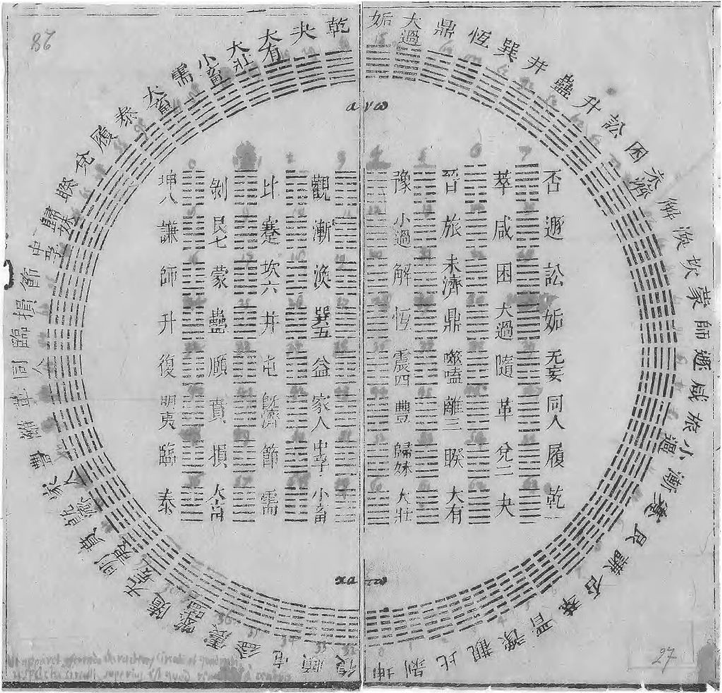

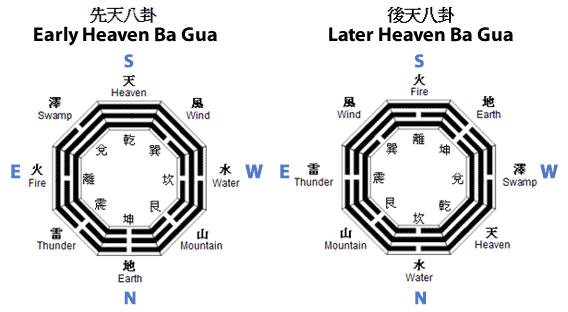
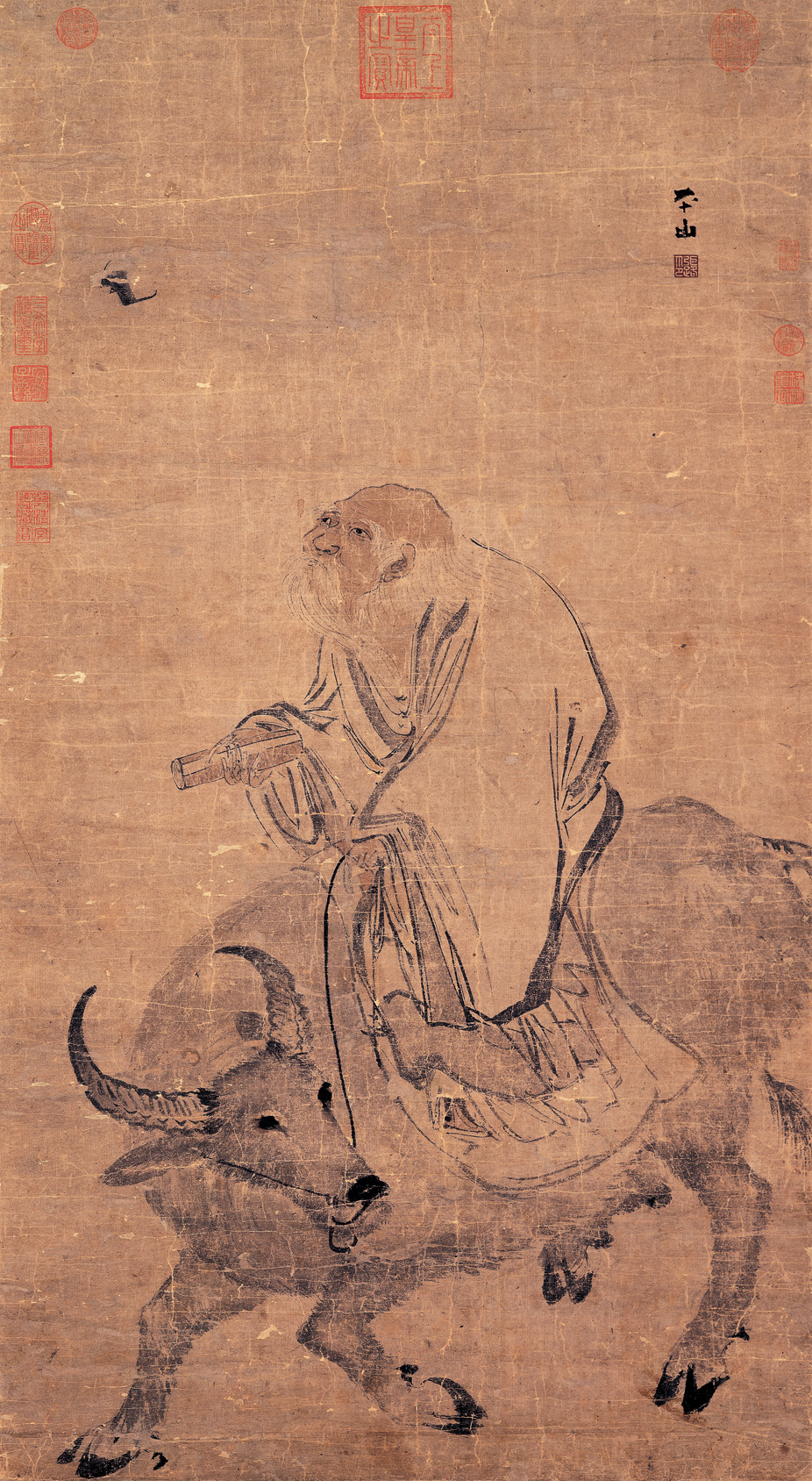
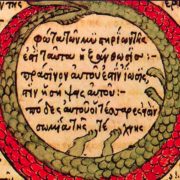
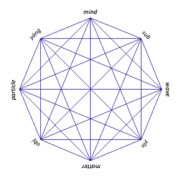
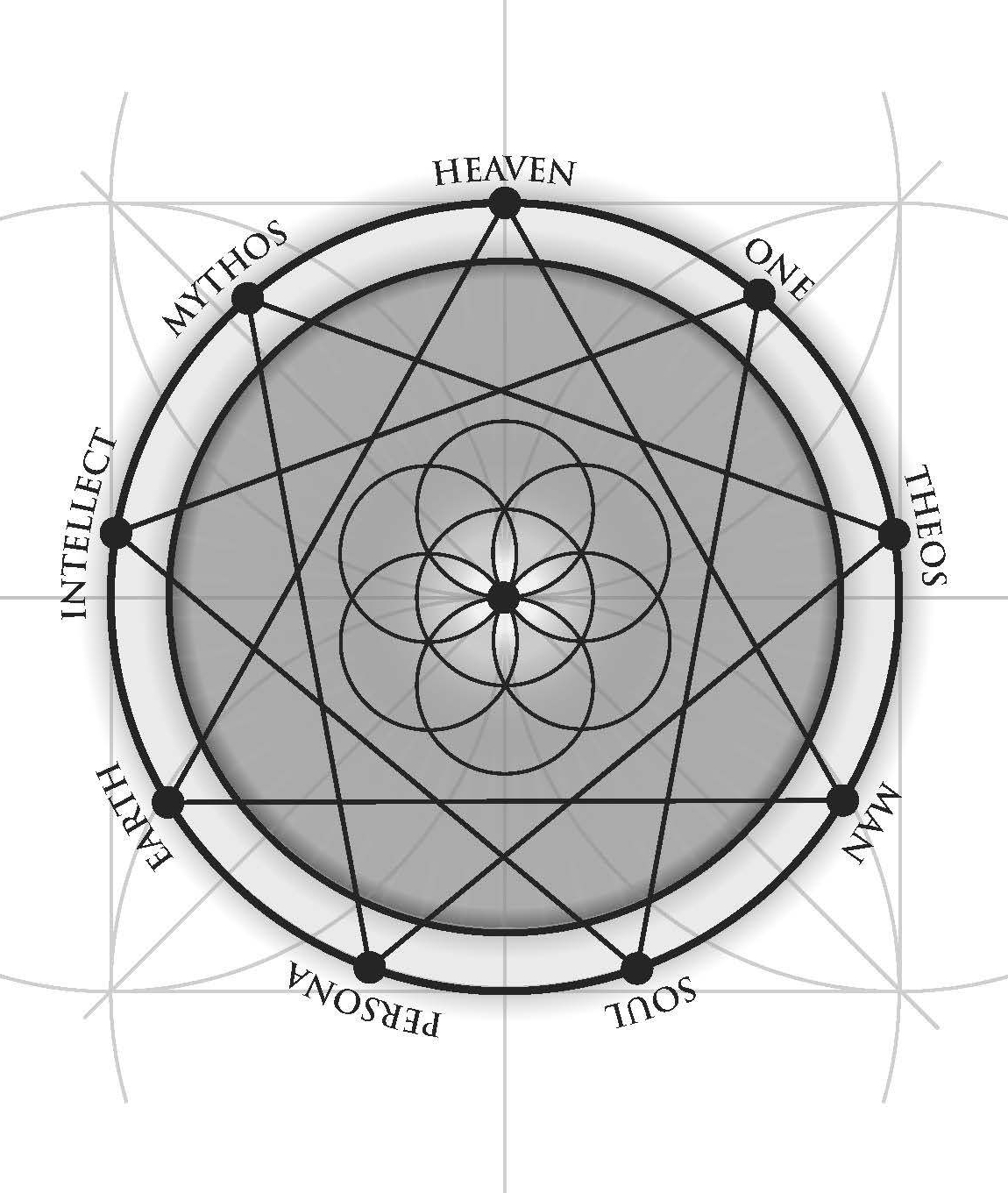
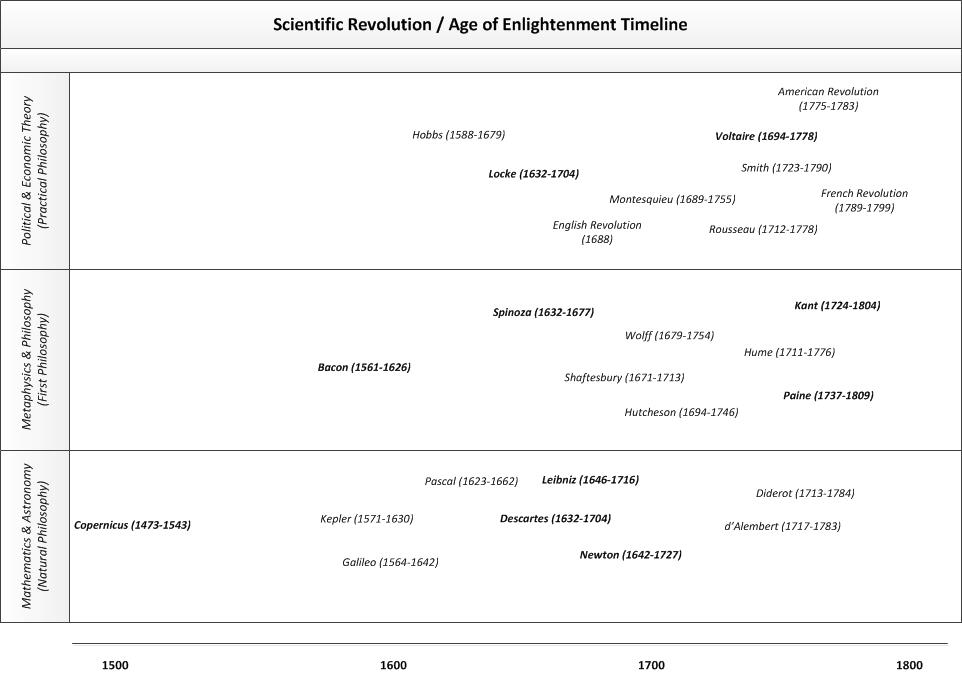

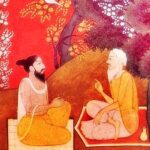
Leave a Reply
Want to join the discussion?Feel free to contribute!